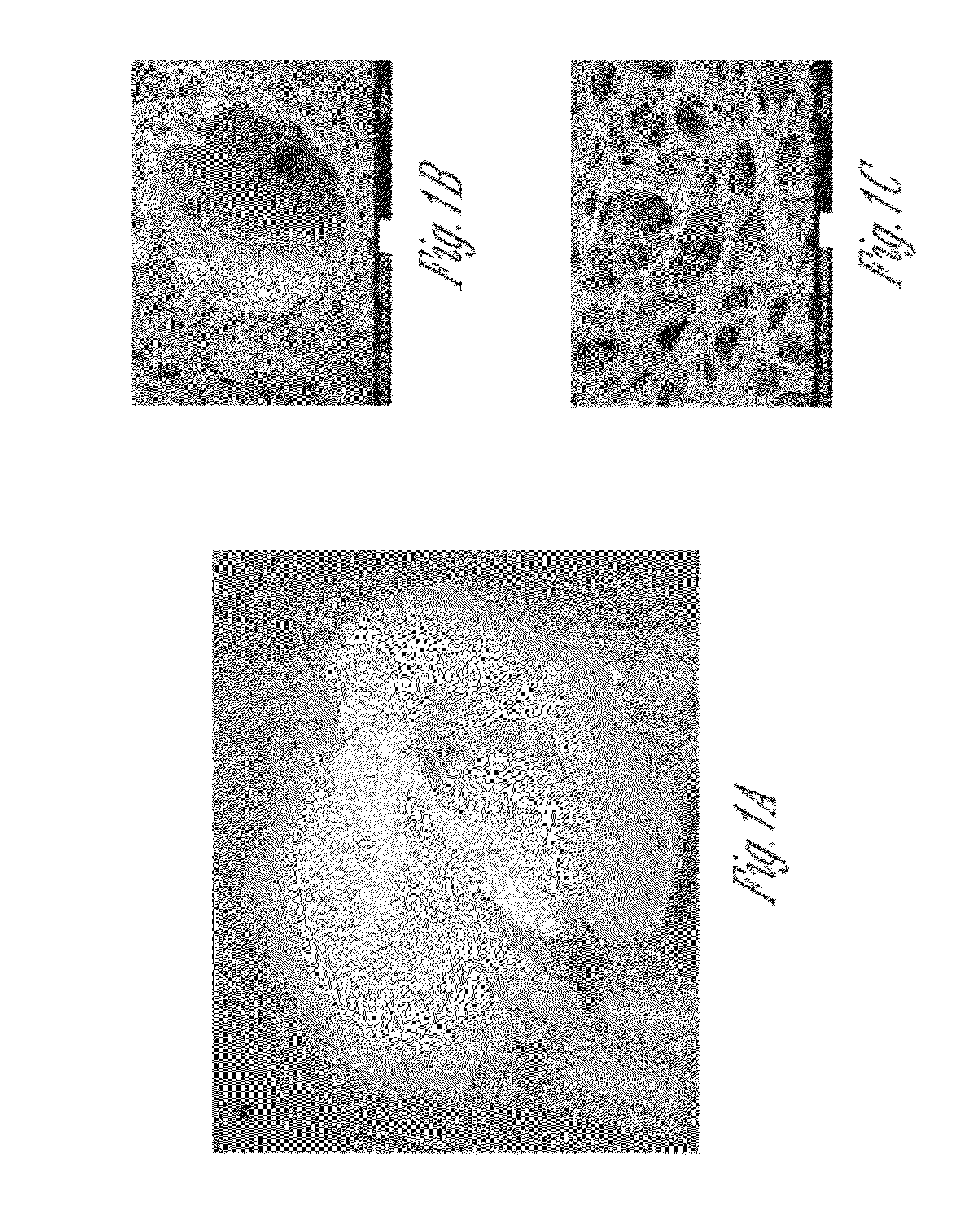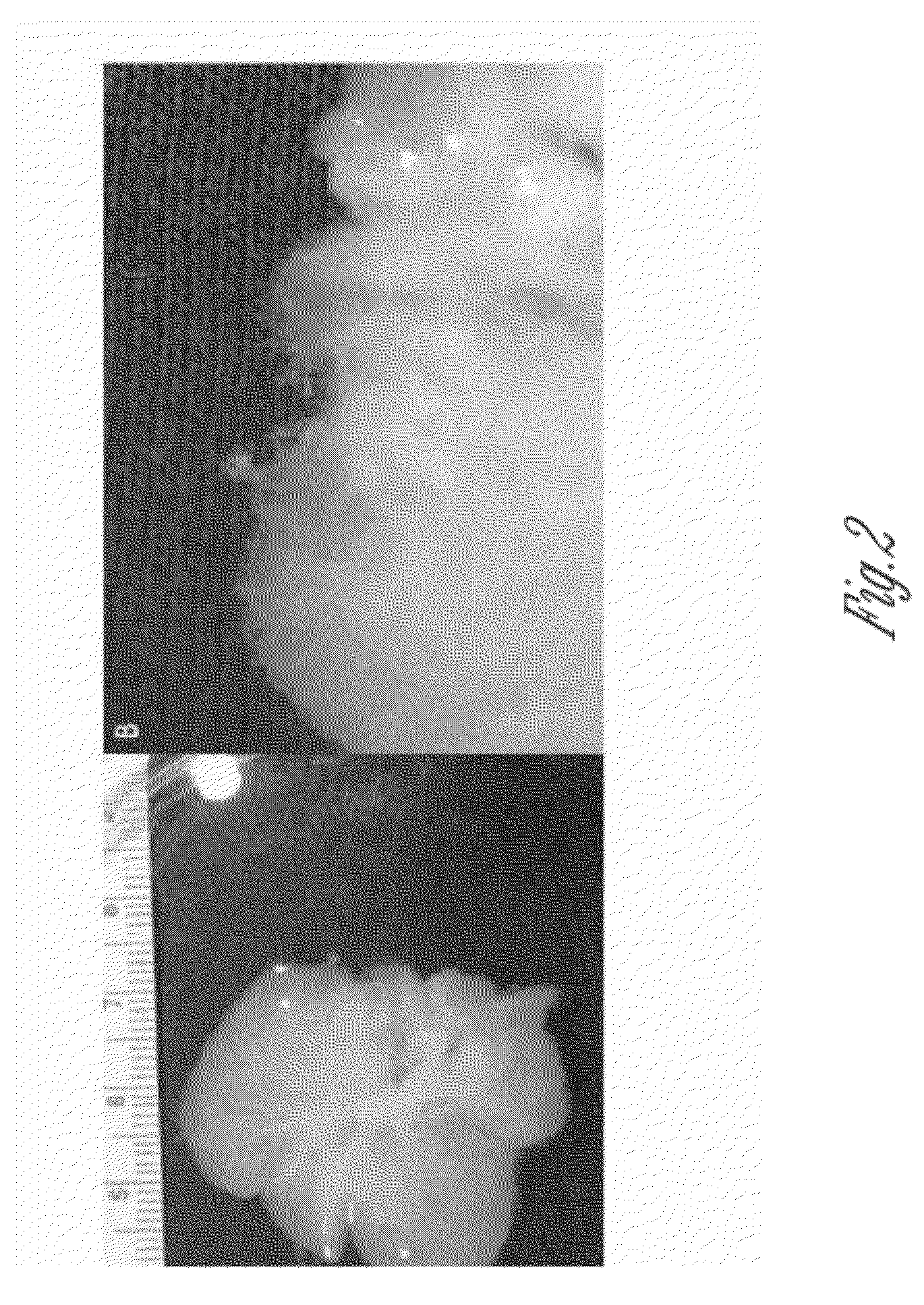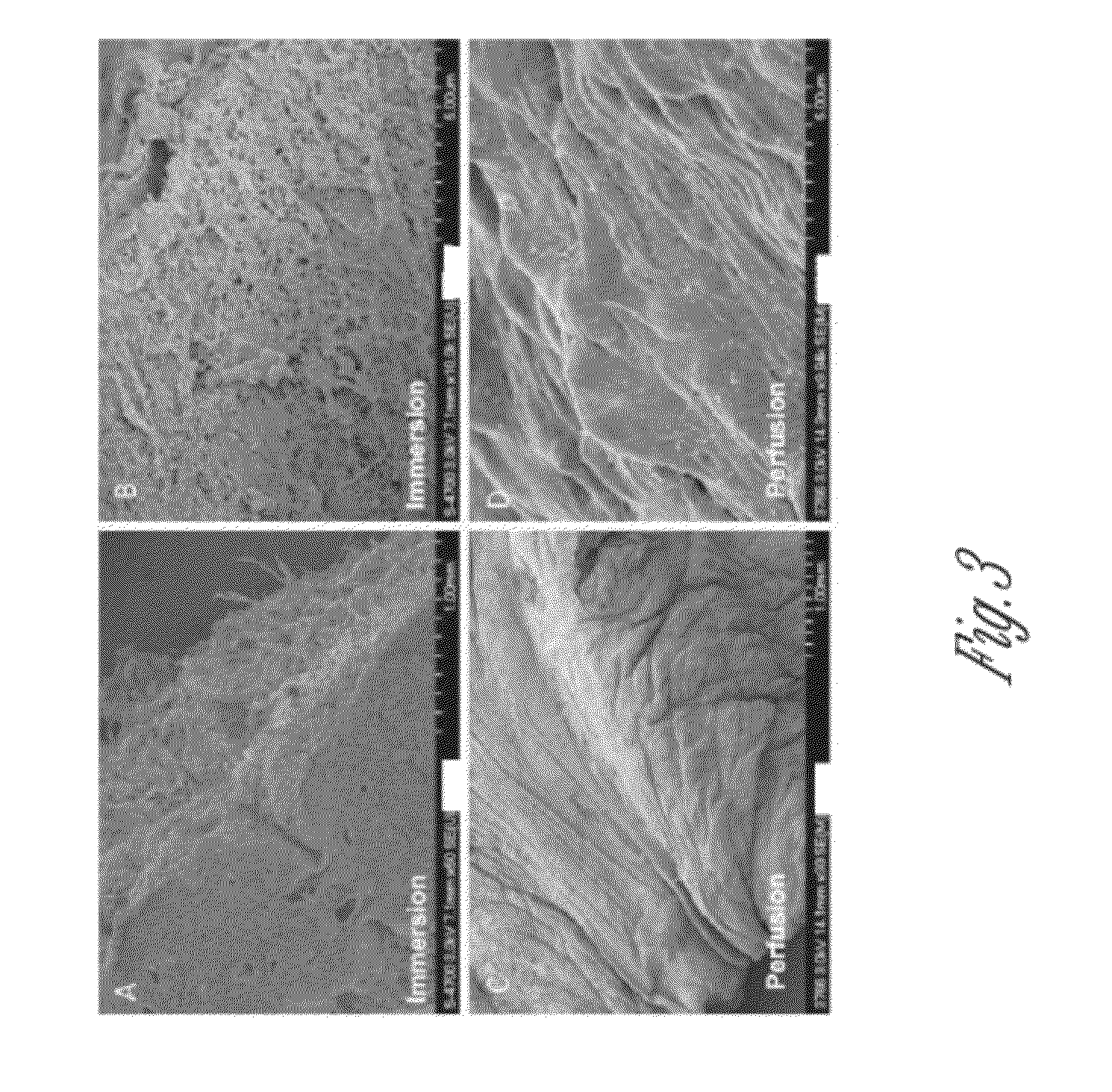Use of perfusion decellularized organs for matched recellularization
a technology of matched recellularization and perfusion decellularization, which is applied in the field of rapid growth, can solve the problems of limited ability to retain functional cellular phenotypes, and differentiated cells can lack the functional properties needed for in vitro or in vivo applications
- Summary
- Abstract
- Description
- Claims
- Application Information
AI Technical Summary
Benefits of technology
Problems solved by technology
Method used
Image
Examples
example 1
Comparison of Perfusion Vs. Immersion
[0100]FIG. 1A shows a photograph of a porcine liver that was perfusion decellularized, and FIGS. 1B and 1C show SEM of a vessel and the parenchymal matrix, respectively, of the perfusion decellularized porcine liver. These photographs show the vascular conduits and the matrix integrity of a perfusion decellularized organ. On the other hand, FIG. 2 shows a gross view of an immersion decellularized rat liver, in which fraying of the matrix can be seen at both low (left) and high (right) magnification.
[0101]FIG. 3 shows SEM of immersion decellularized rat liver (A and B) and perfusion decellularized rat liver (C and D). These results clearly indicate that immersion decellularization significantly compromised the organ capsule (Glisson's capsule), while perfusion decellularization retained the capsule. In addition, FIG. 4 shows histology of immersion decellularized liver (A, H&E staining; B, Trichrome staining) and perfusion decellularized liver (C, ...
example 2
[0105]Prior to recellularization of ECM or during culturing in ECM, cardiac phenotype may be assessed using the following markers: c-MHC, c-TNT, sarcomere formation, and myofibril organization, as well as spontaneous contractions. During the induction of differentiation, the time-course for mRNA levels of cardiac-specific genes may be monitored. Genes coding for a cardiac-specific transcription factor Nkx2.5, a cardiac structure protein α-myosin heavy chain (α-MHC), and a cardiac-specific peptide hormone atrial natriuretic factor (ANF), may be followed.
[0106]In addition, the electrical potentials of cells may be assessed by the spontaneous beating of cells showing extracellular field potentials, and the frequency and timing of beating. To quantitatively assess the number of cardiomyocytes in the total population, intracellular FACS analyses may be performed using an anti-c-MHC antibody. Intra-cellular FACS analysis with an antibody against cardiac-troponin T (c-TNT), a specific prot...
example 3
[0109]One use for a recellularized matrix of the invention is to screen drugs. For example, to achieve a pharmaceutical testing system for drug metabolism and toxicity, human hepatocytes may be seeded into a perfusion decellularized liver matrix. The construct may also be seeded with sinusoidal endothelial cells if desired. The liver construct may then be perfused under normal physiological conditions with cell culture media designed to maintain functional hepatocyctes such as, but not limited to, Williams' Medium E. The liver constructs are then exposed to various drugs for a specified period of time. The constructs are then assayed for various liver functions including albumin, urea, G6PDH, and various CYP functions including CYP1A2, CYP3A4, etc. to determine the overall effect on the liver construct and provide metabolic and toxicity information. Similar studies may be performed using other organs including but not limited to human seeded constructs for heart and kidney to look a...
PUM
| Property | Measurement | Unit |
|---|---|---|
| pressures | aaaaa | aaaaa |
| thickness | aaaaa | aaaaa |
| thickness | aaaaa | aaaaa |
Abstract
Description
Claims
Application Information
 Login to View More
Login to View More - R&D
- Intellectual Property
- Life Sciences
- Materials
- Tech Scout
- Unparalleled Data Quality
- Higher Quality Content
- 60% Fewer Hallucinations
Browse by: Latest US Patents, China's latest patents, Technical Efficacy Thesaurus, Application Domain, Technology Topic, Popular Technical Reports.
© 2025 PatSnap. All rights reserved.Legal|Privacy policy|Modern Slavery Act Transparency Statement|Sitemap|About US| Contact US: help@patsnap.com



